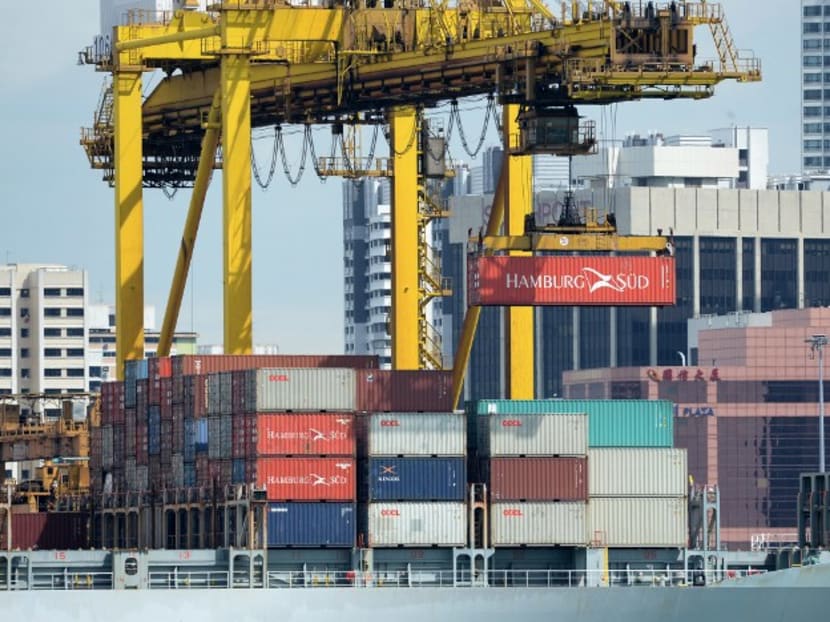S’pore lowers GDP forecast on global uncertainties
SINGAPORE — The Government has lowered Singapore’s growth forecast for this year, as uncertainties arising from the United Kingdom’s exit from the European Union, the weaker global growth outlook and a lacklustre domestic performance combine to weigh on the economy.
SINGAPORE — The Government has lowered Singapore’s growth forecast for this year, as uncertainties arising from the United Kingdom’s exit from the European Union, the weaker global growth outlook and a lacklustre domestic performance combine to weigh on the economy.
Singapore’s economy is now expected to expand by between 1 and 2 per cent, narrowing from the previous forecast of 1 to 3 per cent, the Ministry of Trade and Industry (MTI) said on Thursday (Aug 11) in an update on the Republic’s second-quarter performance.
Investors took the announcement in their stride, with the Straits Times Index falling just 0.2 per cent to close at 2,869.82 on profit-taking following the 1.7 per cent gain in the previous two sessions.
“The global economic outlook has weakened slightly since three months ago in May. The UK’s vote in June to leave the European Union has dampened and also added uncertainties to the global growth outlook. In line with this, most key economies, except for the United States, are expected to see similar or slower growth in the second half of the year as compared to the first half of the year,” the MTI said.
Domestically, the growth of externally-oriented services sectors, such as finance and insurance as well as wholesale trade has slowed, the MTI added. It also noted that the improvement seen in the manufacturing sector in segments such as semiconductors and biomedical manufacturing may not be sustained in light of sluggish global economic conditions. Meanwhile, the construction sector is also likely to see weakening growth in the coming quarters, as builders become more pessimistic about their business outlook.
Final data from the MTI on Thursday showed gross domestic product (GDP) grew by 2.1 per cent in the three months ended June from the corresponding period a year ago, unchanged from the first quarter. From the previous quarter, the economy grew by 0.3 per cent, compared to the 0.1 per cent growth in the preceding quarter. The readings were lower than the 2.2 per cent year-on-year and the 0.8 per cent quarter-on-quarter advance estimates from the MTI last month.
Most private sector economists did not revise their growth forecasts – in the range of 1.1 to 2.2 per cent – after the MTI’s announcement and release of the second-quarter figures.
Ms Selena Ling, OCBC’s Head of Treasury Research & Strategy, said: “The 1 to 2 per cent official growth forecast revision is slightly more bearish than what we anticipated, given first-half growth is already 2.1 per cent year-on-year and second-half growth would have to potentially slip to zero for the full year to hit the lower 1 per cent floor of the revised official forecast range.”
Singapore’s central bank left its current zero appreciation policy for the Singapore dollar unchanged despite the official revision to the GDP forecast.
Ms Jacqueline Loh, deputy managing director of the Monetary Authority of Singapore (MAS), said: “The current stance of monetary policy remains appropriate for overall macro-economic conditions in 2016. The narrowed growth forecast range for Singapore 2016 GDP growth falls within the planning parameters of MAS’ April monetary policy decision.”
UOB economist Alvin Liew said: “We still expect that the MAS will keep its current monetary stance of a zero appreciation of the Singapore dollar nominal effective exchange rate unchanged in its upcoming policy meeting in October, in view of the still-weak global growth conditions that will continue to affect Singapore’s export-oriented industries. However, we do not think that the MAS will further weaken the Singapore dollar via a one-off reduction in the mid-point, as core inflation has remained n on an upward trend in recent months.”
The manufacturing sector expanded 1.1 per cent from a year ago in the second quarter, reversing from the 0.5 per cent decline in the previous quarter, with growth supported by the electronics and biomedical manufacturing clusters.
Growth in the construction sector moderated to 3.3 per cent year-on-year from the 4 per cent in the first quarter, weighed down by a fall in private sector construction works. Services-producing industries grew 1.4 per cent, slowing from 1.7 per cent in the first quarter, due mainly to weaker wholesale and retail trade, information and communications, finance and insurance as well as business services.







